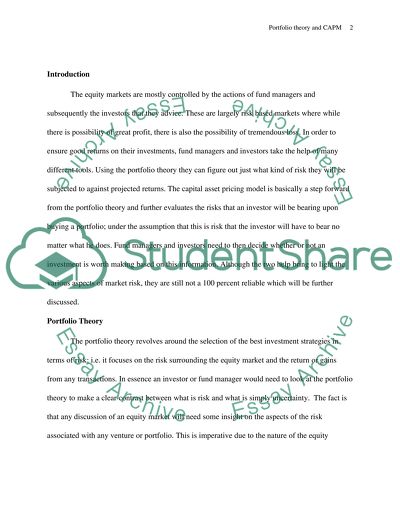Cite this document
(“The relevance of portfolio theory and the capital asset pricing model Essay”, n.d.)
The relevance of portfolio theory and the capital asset pricing model Essay. Retrieved from https://studentshare.org/miscellaneous/1558647-the-relevance-of-portfolio-theory-and-the-capital-asset-pricing-model-to-an-investor-or-fund-manager-in-the-equity-markets
The relevance of portfolio theory and the capital asset pricing model Essay. Retrieved from https://studentshare.org/miscellaneous/1558647-the-relevance-of-portfolio-theory-and-the-capital-asset-pricing-model-to-an-investor-or-fund-manager-in-the-equity-markets
(The Relevance of Portfolio Theory and the Capital Asset Pricing Model Essay)
The Relevance of Portfolio Theory and the Capital Asset Pricing Model Essay. https://studentshare.org/miscellaneous/1558647-the-relevance-of-portfolio-theory-and-the-capital-asset-pricing-model-to-an-investor-or-fund-manager-in-the-equity-markets.
The Relevance of Portfolio Theory and the Capital Asset Pricing Model Essay. https://studentshare.org/miscellaneous/1558647-the-relevance-of-portfolio-theory-and-the-capital-asset-pricing-model-to-an-investor-or-fund-manager-in-the-equity-markets.
“The Relevance of Portfolio Theory and the Capital Asset Pricing Model Essay”, n.d. https://studentshare.org/miscellaneous/1558647-the-relevance-of-portfolio-theory-and-the-capital-asset-pricing-model-to-an-investor-or-fund-manager-in-the-equity-markets.


